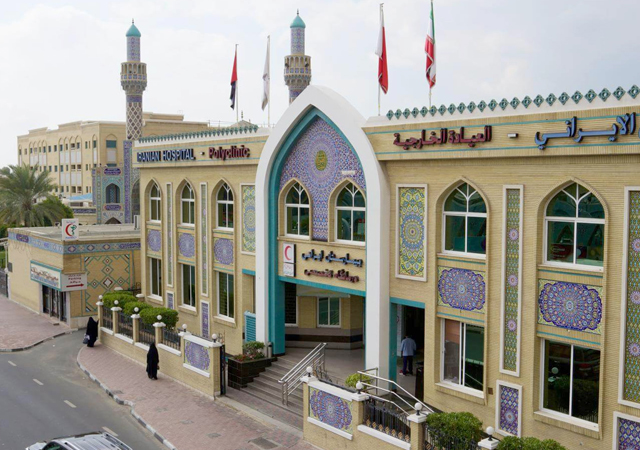
 Dobson ... the success of modernised projects relies on the ongoing asset performance.
Dobson ... the success of modernised projects relies on the ongoing asset performance.
Lifecycle of an asset can long outlast its initial design and planned use. In today’s market, it is becoming more common to see assets redesigned or modernised and used in a more efficient and appropriate way. However, the success of these projects relies heavily on the ongoing asset performance and the role that the facility manager plays in delivering service outcomes.
But why is facilities management (FM) so important once an asset has been repurposed or modernised and what value does it deliver to property owners, asset managers, and residents and tenants?
Operational efficiency
A modernised building will bring with it new systems and technologies ranging from the latest building management systems (BMS) and advanced heating, ventilation and air-conditioning (HVAC) systems to smart lighting and intelligent security systems. Facilities management is tasked with integrating these new systems, maintaining them regularly and ensuring their optimum performance. A proactive approach to help minimise the downtime of such critical systems is important, as operational costs are one of the most critical decisions made by end-users in some very competitive markets.
For example, when an industrial building is repurposed to become a modern office space, the HVAC system was not initially designed to operate for a different type or occupancy and, as a result, needs to be regularly monitored and serviced by the right supplier to ensure that it is delivering the performance it was designed and specified to deliver. FM will facilitate routine maintenance inspections, oversee and respond to reactive repairs, and take steps to balance the settings to ensure the area is not only comfortable but also energy efficient.
Occupant experience
Attracting and retaining tenants or occupants – and keeping them happy – is one of the key reasons for repurposing or modernising an asset. Good facility management will ensure that the environment is clean and safe, common areas are clutter-free and attractive, and problems are addressed promptly. The quality of the FM often enhances the experience for occupants, which drives higher satisfaction, occupancy, and retention rates, resulting in higher and more stable income for the owner.
For instance, when a historic building is converted into a luxury apartment complex, the asset must provide the same level of comfort and luxury features expected from a new building, but still maintain its historic charm. The building must be clean, safe, and well-maintained, and offer amenities such as fitness centres, lounges, and outdoor spaces. This is where facilities management becomes crucial, ensuring all of these features are accessible to residents and are well-maintained, from ensuring walkways are cleared of debris to developing specific plans for cleaning and maintenance of historic buildings.
Sustainability and energy efficiency
Redesigning and repurposing an asset also provides the opportunity to integrate green technologies and other sustainable practices. FM is essential for not only deploying these solutions, but also maintaining them throughout the assets’ lifecycle. If building systems are energy-intensive, or if waste generation is high, the facility manager’s role includes tracking energy usage and waste management, and ensuring eco-friendly systems are installed and maintained in order to minimise environmental impact. The carbon footprint of the building can be significantly reduced by choosing the right waste, water and energy management systems, which also leads to cost-savings and compliance with environmental regulations.
Let’s take the example of an office building that has installed solar panels on the roof, uses motion sensors, daylight sensors, and energy-efficient lighting to reduce energy consumption, and has installed energy-efficient windows to improve the indoor environment. FM must monitor the performance of these green initiatives: building and rooftop solar systems, well-insulated windows, and new types of windows, and ensure they are operational and delivering the expected energy savings. The facility manager must also educate tenants at tenant meetings and in community forums about updates to building systems. Improving energy efficiency and expanding the appeal of the building to green-conscious tenants is another way to attract and retain tenants.
Protecting asset value
Converting and upgrading existing assets are significant investments, and careful ongoing management and proactive maintenance is crucial to protect that investment. Building systems and structures need constant inspection, maintenance, and often upgrades should any issues arise, to prevent or slow down the deterioration of the asset and preserve the asset’s value.
When a warehouse is repurposed into a retail space, it needs a more rigorous maintenance plan compared to its previous use. Checks need to be regularly carried out for structural damage, plumbing leaks, or electrical faults as any such issues will lead to downtime and lost footfall and revenue. Cleaning must also be of a high standard, and pest control spot-on. This effort in asset maintenance creates the platform for the property to continue to generate revenue and provides protection of the owner’s investment.
Heightening health and safety standards
Post Covid-19, health and safety has never been more important in facilities management. Buildings must meet stringent health and safety standards to ensure they protect occupants and visitors. FM is key to ensuring proper ventilation and sanitation amongst others. Buildings that have been flexible in their response and action to the pandemic have retained higher occupancy than those that were not prepared and did not prioritise FM.
To cite an example, in view of new demands for health and safety, a shopping mall may be refurbished to incorporate more open spaces and upgrade air filtration systems. These systems must be well managed by FM to ensure they are cleaned and disinfected regularly to operate at their best, keeping the environment healthy and safe for visitors and people who work in the mall.
Digital infrastructure management
As repurposed infill schemes and assets are modernised, this creates the opportunity to embed advanced technologies within buildings, such as artificial intelligence (AI)-driven BMS and Internet of Things (IoT) devices.
With BIM and IoT, monitoring and controlling building systems can take place centrally and/or remotely, while also collecting data for informed decision-making capability, to respond to issues as and when they occur, or even before they occur. However, these systems need to be commissioned, regularly monitored, maintained, and fine-tuned in order to operate as intended.
In a refurbished office building with a BMS, facility managers can monitor real-time energy consumption, temperature and air quality, while sensors in IoT devices can prevent leaks, monitor occupancy levels whilst providing information on maintenance needs. By making use of these modern technologies, FM professionals can help to improve building performance, reduce costs and create an improved experience.
Supporting compliance and risk management
Compliance with regulations and risk management is an essential part of facilities management. A renovated building or refurbished property will often bring about a range of compliance obligations, such as updated building codes, and obligations to support maintenance and safety covering aspects such as fire safety, life safety systems, health codes, or accessibility.
For example, a historic building converted into a hotel must comply with fire safety regulations, accessibility standards, and health codes. It falls on the facilities managers’ shoulders to ensure the building meets these requirements including but not limited to conducting fire drills, maintaining safety equipment and addressing potential hazards. Their work can significantly reduce and manage risks and help to protect the property, the people within it, and the value of the owner’s investment.
Preparation for the Future
The role of FM is evergreen; it will continue to morph alongside the needs of assets and the users of those assets. As technology evolves, new demand from end-users emerges, so facilities managers must be nimble and open to embracing new technologies as it is precisely that forward-thinking mindset that guarantees the asset will stay relevant and competitive in the marketplace.
A repurposed office building must be capable of adjusting to the ever-growing need for flexible workspaces and work-from-home solutions. Facilities managers may choose to reconfigure the office floor plan, integrate new workspace booking software, and offer services that promote a flexible work environment. They may also collect data on tenants to learn more about their ever-evolving needs and preferences to make better decisions about future improvements.
Conclusion
The importance of FM for repurposed and modernised properties cannot be overstated. It is the glue that holds everything together, from the enhancement of operational efficiency and occupant experiences to the promotion of sustainability, value preservation, and future adaptation. As the real estate environment continues to change, one thing is certain to remain constant: the role of facilities management will be even more important.

















.jpg)













 (1).jpg)
















































